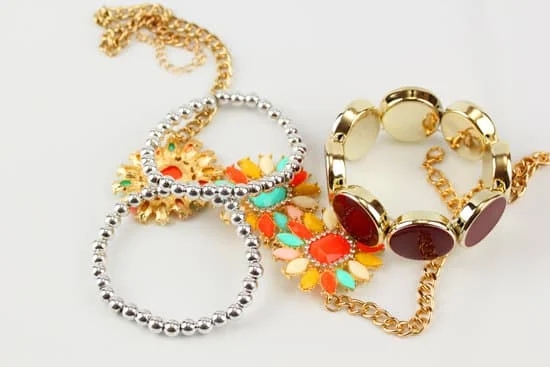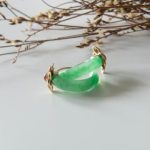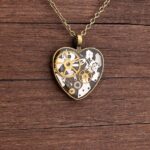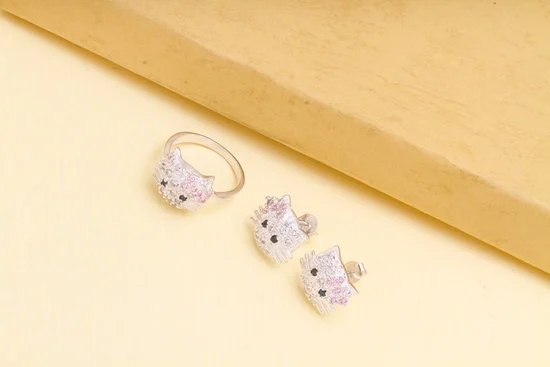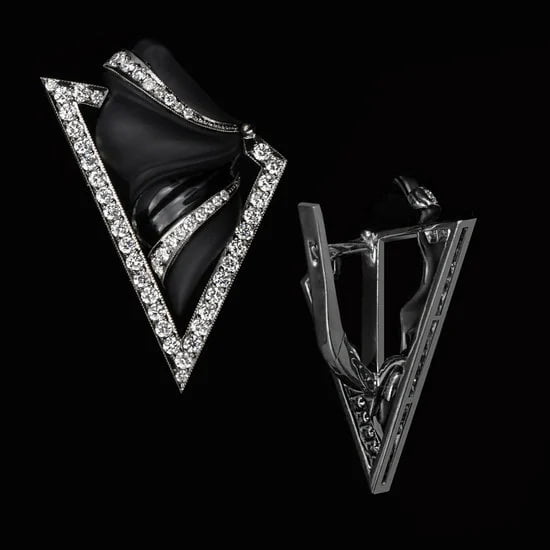Are you interested in pursuing a career as a fine jewelry designer? In this article, we will explore the various aspects of what it takes to become a successful fine jewelry designer. From understanding the significance of fine jewelry in the fashion industry to developing your unique style and navigating the business side of the industry, we will cover everything you need to know to kickstart your journey as a fine jewelry designer.
Fine jewelry design encompasses creating exquisite pieces that are crafted with precision and attention to detail. It holds significant importance in the fashion industry, often serving as timeless statement pieces for individuals. The demand for talented fine jewelry designers continues to grow, making it an appealing career choice for those passionate about creativity and craftsmanship.
Whether you are a budding artist or someone with an eye for sophisticated designs, honing your skills through education and training is essential. From traditional jewelry-making skills to exploring innovative techniques, aspiring fine jewelry designers must understand the value of continuous learning and hands-on experience. So let’s dive into the world of fine jewelry design and discover what it takes to succeed in this competitive yet rewarding industry.
Education and Training for Aspiring Fine Jewelry Designers
Aspiring fine jewelry designers should consider pursuing a degree related to jewelry design, such as a Bachelor of Fine Arts (BFA) in Jewelry Design or a Bachelor of Arts (BA) in Jewelry and Metalsmithing. These programs provide aspiring designers with the necessary knowledge and skills in design principles, jewelry fabrication, stone setting, casting, and metalworking. Additionally, obtaining certifications from reputable institutions and organizations can further validate one’s expertise in the field.
Furthermore, traditional jewelry-making skills are essential for aspiring fine jewelry designers. Acquiring skills such as metal casting, soldering, stone setting, and enameling through hands-on training or apprenticeships with experienced jewelers can set aspiring designers apart. These traditional skills serve as the foundation for creating high-quality and intricate pieces of fine jewelry.
Internship opportunities with established jewelry designers or reputable jewelry companies can provide invaluable experience and mentorship for aspiring fine jewelry designers. Internships allow individuals to gain exposure to various aspects of the industry, from design to production to marketing. Additionally, apprenticeship opportunities with master jewelers enable aspiring designers to learn advanced techniques and refine their craftsmanship under the guidance of seasoned professionals.
- Pursue a degree in Jewelry Design or Metalsmithing
- Obtain certifications from reputable institutions
- Acquire traditional jewelry-making skills through hands-on training or apprenticeships
- Seek internship opportunities with established jewelers or companies
- Consider apprenticeship opportunities with master jewelers
Developing Your Unique Style as a Fine Jewelry Designer
Finding Inspiration for Your Designs
As a fine jewelry designer, finding inspiration is crucial in developing your unique style. There are various sources of inspiration that you can explore, such as nature, architecture, art, and even personal experiences. Take the time to observe the world around you and draw inspiration from different elements that resonate with you. Additionally, traveling to different places and immersing yourself in diverse cultures can also provide fresh perspectives and ideas for your designs.
Experimenting With Different Materials and Techniques
To stand out as a fine jewelry designer, it’s essential to experiment with various materials and techniques. This may involve working with different types of precious metals, gemstones, beads, and other unconventional materials. By exploring new techniques such as filigree work, enameling, or stone setting, you can add dimension and novelty to your designs. Embracing experimentation will not only help you discover your signature style but also add depth and creativity to your collection.
Incorporating Cultural Influences Into Your Designs
In today’s globalized world, cultural influences play a significant role in fine jewelry design. Incorporating elements from various cultures into your designs can make your pieces more relatable and appealing to a broader audience.
Whether it’s symbols, colors, or traditional craftsmanship techniques from different regions, infusing cultural influences into your work adds an extra layer of storytelling and relevance. However, it’s crucial to approach this with sensitivity and respect for the cultures you draw inspiration from to create an authentic representation in your designs.
Understanding the Business Side of Fine Jewelry Design
When it comes to becoming a successful fine jewelry designer, having a well-thought-out business plan is crucial. A business plan outlines the goals and strategies for your jewelry brand, providing a roadmap for success. It should include an overview of your brand, target market analysis, marketing and sales strategies, as well as financial projections. This document not only helps you stay focused on your business objectives but also serves as a valuable tool when seeking funding or partnerships.
Building a Strong Brand Identity
In the competitive world of fine jewelry design, establishing a strong brand identity is essential for standing out in the market. Your brand identity encompasses everything from your logo and visual elements to your company’s values and mission. It’s important to create a cohesive and memorable brand image that resonates with your target audience. This may involve working with graphic designers, branding experts, and even collaborating with other artists or influencers to enhance your brand’s visibility.
The Importance of Networking and Marketing in the Industry
Networking and marketing play significant roles in the success of a fine jewelry designer. Building relationships with suppliers, retailers, industry professionals, and potential clients can open doors for opportunities such as collaborations, features in publications, or showcases at prestigious events.
Additionally, having a strong online presence through social media platforms and e-commerce websites can help expand your reach and attract customers from all over the world. Engaging in targeted marketing efforts such as email campaigns, sponsored content, or partnerships with other brands can also contribute to the growth of your jewelry business.
Overall, understanding the business side of fine jewelry design is crucial for aspiring designers who want to thrive in this competitive industry. From creating a solid business plan to building a strong brand identity and leveraging effective networking and marketing strategies – these aspects are just as important as honing your creative skills in jewelry making. By mastering both the artistry and entrepreneurship behind fine jewelry design, you can position yourself for success in this dynamic field.
Essential Tools and Equipment for Fine Jewelry Designers
The world of fine jewelry design is a captivating and intricate one, with designers seamlessly blending skill, creativity, and passion to create stunning pieces that captivate the beholder. However, behind every breathtaking piece of fine jewelry lies an array of essential tools and equipment that are crucial to bringing a designer’s vision to life. From precision tools to state-of-the-art technology, being well-equipped is an indispensable aspect of the craft.
Investing in high-quality tools and equipment is paramount for any aspiring fine jewelry designer. Whether it’s specialized hand tools for intricate detailing or advanced machinery for casting and stone setting, having the right equipment can elevate the quality of your work. It’s important to research reputable suppliers and invest in tools that are durable, reliable, and designed specifically for jewelry making.
In today’s digital age, technological advancements have also become integral to the art of fine jewelry design. CAD (computer-aided design) software has revolutionized the way designers conceptualize and develop their pieces.
Learning how to use these programs can significantly enhance a designer’s capabilities by allowing them to create precise designs and detailed renderings before moving on to physical production. Aspiring designers should consider enrolling in courses or workshops focused on these technologies to stay ahead in the industry.
| Essential Tools and Equipment | Importance |
|---|---|
| Specialized hand tools | Necessary for intricate detailing |
| CAD software | Elevates design capabilities |
Working With Precious Metals and Gemstones
When it comes to sourcing high-quality materials, it’s important to establish relationships with trusted suppliers. Whether it’s for gold, silver, platinum, diamonds, or other precious gemstones, knowing where your materials come from and ensuring their authenticity is vital. Look for suppliers who prioritize ethical practices and have transparent supply chains to align with your values as a designer.
The process of working with precious metals and gemstones involves a combination of traditional craftsmanship and modern techniques. From casting and soldering metal to cutting and setting gemstones, honing these skills through practice and experimentation is key. Aspiring designers should also stay informed about the latest advancements in jewelry-making technology to remain competitive in the industry.
Ensuring ethical and sustainable practices in sourcing materials has become increasingly important in the fine jewelry industry. Consumers are becoming more conscious about where their jewelry comes from and the impact of its production on the environment and communities. As a fine jewelry designer, incorporating sustainable practices into your sourcing methods not only aligns with current consumer demand but also contributes to the overall reputation of your brand.
Building a Portfolio and Establishing a Presence in the Industry
Creating a professional portfolio is crucial for any aspiring fine jewelry designer. Your portfolio will serve as a visual representation of your skills, creativity, and design aesthetic. Include high-quality images of your best work, along with detailed descriptions of each piece. Consider hiring a professional photographer to capture the intricate details of your jewelry, as well as models to showcase how your pieces look when worn.
Participating in jewelry shows and exhibitions is another effective way to establish a presence in the industry. These events provide an opportunity for you to connect with potential clients, buyers, and other professionals in the field. It’s also a chance to receive feedback on your designs and gain exposure for your brand. Research different shows and exhibitions that align with your target market and design style, and prepare a captivating display that showcases your best work.
In today’s digital age, utilizing social media and online platforms is essential for reaching a wider audience. Create an online portfolio or website where potential clients can view your collections and learn more about your brand. Additionally, use social media platforms such as Instagram, Pinterest, and Facebook to share behind-the-scenes glimpses of your creative process, interact with followers, and promote your latest designs.
| Professional Portfolio | Jewelry Shows/Exhibitions | Social Media Presence |
|---|---|---|
| Include high-quality images of best work | Connect with potential clients | Create an online portfolio or website |
| Detailed descriptions of each piece | Receive feedback on designs | Utilize Instagram, Pinterest, Facebook |
Overcoming Challenges as a Fine Jewelry Designer
In conclusion, becoming a successful fine jewelry designer requires a combination of education and training, developing a unique design style, understanding the business side of the industry, and actively working to establish one’s presence in the competitive world of jewelry design. Aspiring designers should seek out relevant degrees and certifications while also honing traditional jewelry-making skills through internships and apprenticeships.
Additionally, finding inspiration for designs, experimenting with materials and techniques, and incorporating cultural influences can help in developing a distinctive style that sets a designer apart.
Understanding the business side of fine jewelry design is equally important, as it involves creating a solid business plan, building a strong brand identity, and effectively networking and marketing within the industry. Investing in high-quality tools and equipment, using essential software for designing jewelry, and having a well-equipped workspace are also crucial for success. Furthermore, sourcing high-quality materials responsibly while ensuring ethical and sustainable practices is essential when working with precious metals and gemstones.
Finally, overcoming challenges such as competition in the industry, managing the creative process without burning out, and navigating the ups and downs of entrepreneurship are inevitable hurdles that every aspiring fine jewelry designer must face. By staying resilient, continuously improving one’s skills, networking within the industry through exhibitions and social media platforms to showcase work can all contribute to overcoming these challenges.
In summary, becoming a successful fine jewelry designer involves dedication to both craft and business aspects of this competitive field.
Frequently Asked Questions
How Do I Get Into the Fine Jewelry Industry?
Getting into the fine jewelry industry often requires a combination of education, experience, and networking. Pursuing a degree in jewelry design, gemology, or a related field can provide the necessary knowledge and skills.
Building a portfolio of work and seeking opportunities for internships or apprenticeships within established jewelry companies can also help to break into the industry. Networking with professionals in the field and staying updated on industry trends and developments is crucial for making connections and finding potential job opportunities.
How Do I Become a Jewelry Designer?
Becoming a jewelry designer typically involves pursuing formal education in jewelry design or a related field. Many designers also have background knowledge in gemology, metalworking, or other relevant disciplines.
Building a strong portfolio of original designs is essential for showcasing creativity and skill to potential employers or clients. Additionally, gaining practical experience through internships, apprenticeships, or working under established designers can provide valuable insight into the industry and help to develop one’s own personal style as a designer.
What Experience Is Required to Get Into Fine Jewelry?
Experience required to get into fine jewelry can vary depending on the specific role within the industry. For careers in jewelry design, having a strong portfolio of original designs and practical experience through internships or apprenticeships is often required. For roles such as gemologist or appraiser, obtaining relevant certifications and hands-on experience with precious gems is crucial.
Retail sales positions may require prior experience working with luxury goods or customer service. Overall, having a combination of education, practical skills, and relevant work experience is important for breaking into the fine jewelry industry.

Welcome to my jewelry blog! My name is Sarah and I am the owner of this blog.
I love making jewelry and sharing my creations with others.
So whether you’re someone who loves wearing jewelry yourself or simply enjoys learning about it, be sure to check out my blog for insightful posts on everything related to this exciting topic!

